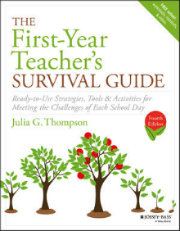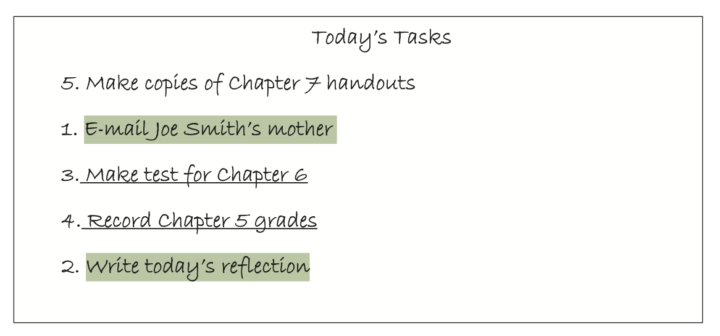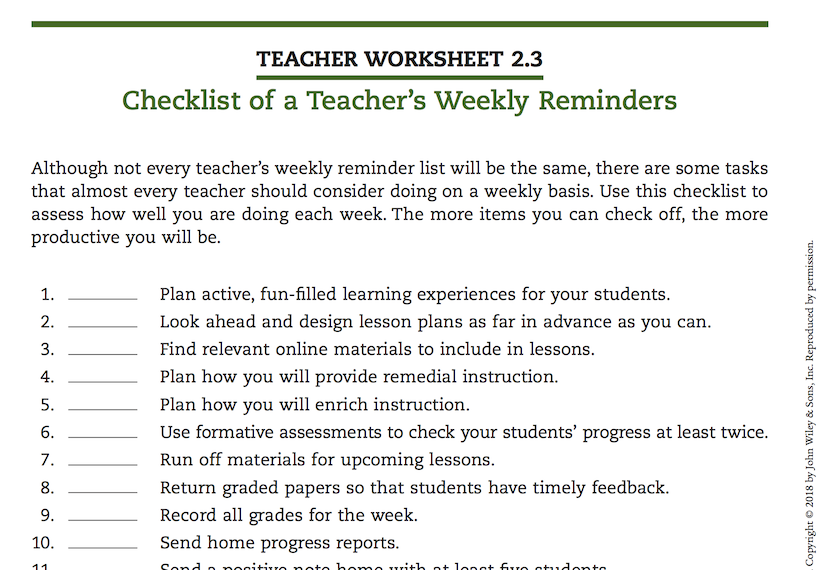Time Management for the Incredibly Busy Teacher
Author and award-winning teacher Julia G. Thompson is best known for her advice and “survival tips” for beginning teachers.
Poor time management is one of the most debilitating bad habits of any profession and especially for educators. We have so much to do and so little free time to accomplish it that many of us often feel overwhelmed and stressed.
With forethought and attention to detail, however, you can develop the time management strategies that will make it easier for you to manage your workload and to create a rewarding work-life balance.
Effective time management begins with making deliberate choices about prioritizing your professional tasks.
How to Prioritize Your Professional Tasks
With the workplace pressure that most teachers experience, it is crucial to prioritize your tasks so that you can accomplish everything you need to do, move forward in meeting your goals, and reduce your stress level so that you can have the work-life balance that you need to succeed.
Here is a simple five-step process to help you prioritize your work:
► Step One: It’s only common sense to begin by brainstorming a list of the tasks that you need to do. Jotting them down in a list will make it easier for you to visualize the work that must be done.
► Step Two: After you have made a task list, go over it carefully to determine the urgency of each task. Highlight the tasks that should be completed before you leave school for the day. Some examples of an urgent school task could include:
- Responding to an e-mail from a parent or guardian
- Responding to an e-mail from a supervisor
- Making a phone call to a parent or guardian about a problem
- Dealing with a discipline issue
- Making copies of the handouts you will need for the next day’s lesson
- Writing a brief reflection on the day’s instruction
- Making sure that the equipment and materials for the next day are ready
► Step Three: After you have determined the urgent tasks that need to be accomplished, look at the list of tasks again to determine the ones that can be accomplished with a brief delay of a day or two. It is always a good idea to get the more troublesome ones out of the way first. Examples of this type of task could include:
- Recording or posting grades
- Sending home positive notes for students
- Giving feedback on assignments (Be sure to stagger this so that the feedback is timely and meaningful.)
- Making copies of next week’s handouts
- Creating a test to be given next week
- Making daily plans for the next week and beyond
- Making sure you have enough supplies for next week’s instruction
► Step Four: A fourth step in prioritizing the tasks in your workload involves determining the ones that are necessary to do but that do not need to be done for several days or could even be tasks that are optional. Examples of this type of task could include:
- Creating a new bulletin board
- Adjusting an alternative assessment for a current unit of study
- Searching for new project materials
- Browsing for creative lesson plans online
- Planning a field trip for next semester
- Updating your digital documents or cleaning out a file drawer
- Sharing resources with a colleague for a new unit of study
► Step Five: After you have jotted down your tasks and identified their urgency level, go through the list and number them in the order that you intend to accomplish them. Figure 2.1 from my book features a sample list to guide you.
 3 Tools to Help Prioritize Your Tasks
3 Tools to Help Prioritize Your Tasks
► 1. Categorize your brainstorming. After you have brainstormed the tasks that you need to accomplish, you can use Teacher Worksheet 2.1 from my book to list them in the proper category so that you can manage your workload efficiently.
► 2. Create your daily to-do list. A to-do list is such an invaluable tool that it is hard to imagine a successful teacher who does not use one for time and task management. The best way to use a to-do list effectively is to create it the day before you will need it—preferably before you leave school for the day. If you do this, when you arrive at school the next morning, you’ll be able to start your day with a quick review of the things that need to be accomplished.
Many teachers find that a more structured daily to-do list is called for to manage all the tasks we must complete. A template, such as the one you’ll find in Teacher Worksheet 2.2, not only allows you to manage your tasks but also serves as an informal record of each day’s work if you keep them on file. I’ve included some of the typical tasks that teachers have to accomplish successfully from day to day.
► 3. Devise a weekly reminder list. With a list of weekly reminders you can assess how well you are doing each week. Although not every teacher’s weekly reminder list will be the same, there are some tasks that almost every teacher should consider doing on a weekly basis.
In Teacher Worksheet 2.3 I’ve listed many of the tasks or “mental reminders” that I’ve learned to keep track of week to week. You may want to add or subtract (or both) but you’ll get the idea!
In a future post, I will share some quick tips from my book about maximizing the time you have available at school. Meanwhile, if you are a novice teacher who’s starting to feel really overwhelmed, I’ll leave you with this hopeful quote from 19-year veteran teacher Jessica Statz:
I think what surprised me the most as a new teacher was trying to manage my time. I am very good at time management and thought it would be a piece of cake. I was wrong. I felt prepared to teach my subject, but once the real work began to happen, I had to figure out a way to still go on walks, watch TV, and hang out with friends. It took time, but I was able to prioritize life and work.
Julia G. Thompson, who received her BA in English from Virginia Tech, recently retired after forty years as a classroom teacher in the public schools of Virginia, Arizona, and North Carolina. She continues to focus her advice on the practical aspects of a teacher’s busy professional life.





































No amount of time management skills can enable us to complete the 12 hours of tasks we are given in the 8 hours for which we are paid…..